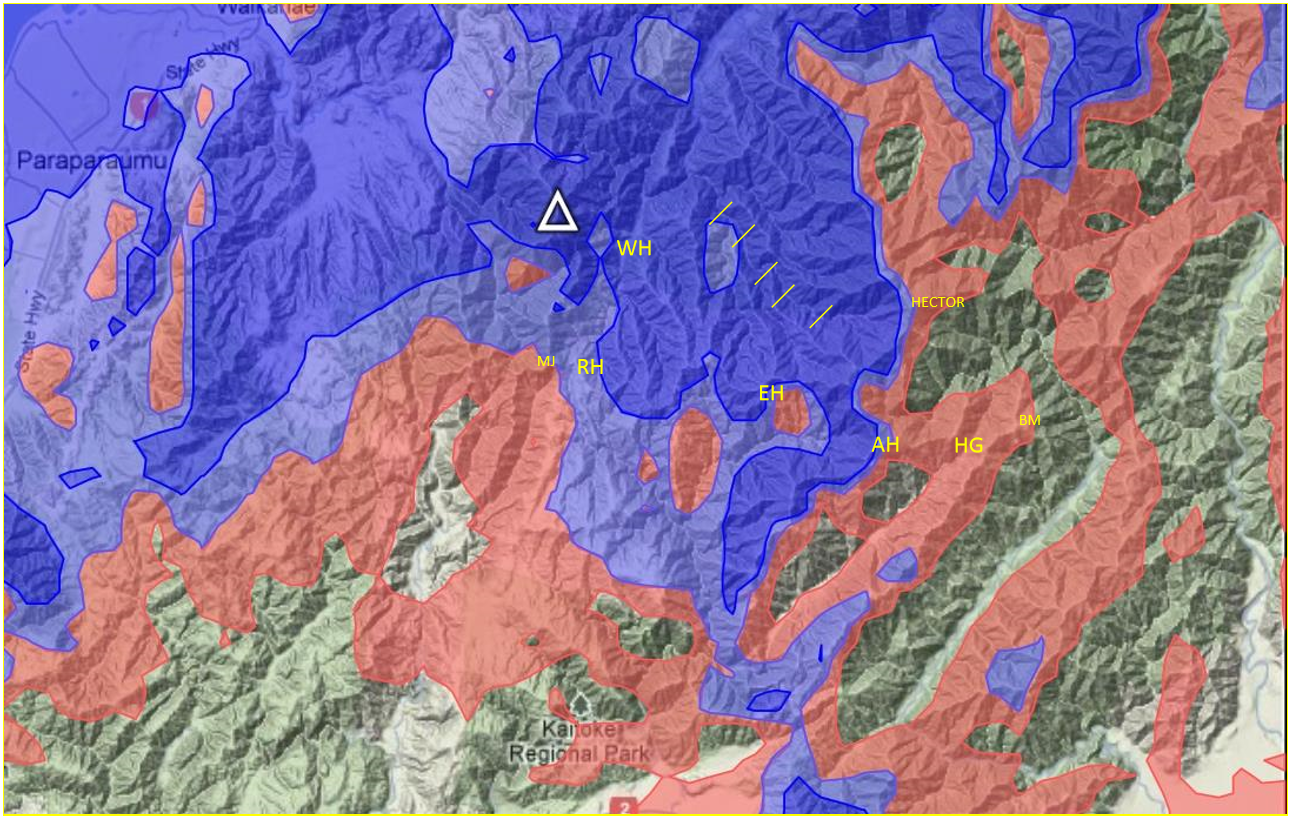The page will include details of various coverage planning tools.
RADIO MOBILE ONLINE
A very easy to use on-line option is Radio Mobile Online by Roger Coudé VE2DBE

UHF DMR Coverage from Mt Cavendish, blue is predicted good handheld coverage, with red mobile coverage.
The above plot has the Strong colour set to x0055FF and Weak set to xFF0000.
Recommended by ZL4JY
CRC-COVWEB
A more complex on-line option was the sadly no longer available Radio Coverage Prediction using Longley Rice by the Communications Research Centre Canada
Note that the default field strength breaks in the COVWEB prediction tool are:
>75 dBµV/m
>60 dBµV/m
>45 dBµV/m
To a dipole at VHF these levels are between -73 and -43 dBm, considerable stronger signal levels than is useful in the SAR environment so it necessary to alter the field strength parameters in the coverage display. The following values are recommended for VHF SAR coverage plots:
>48 dBµV/m ≈ -70 dBm (dipole) and -82 dBm (typical short helical or ‘rubber ducky’)
>33 dBµV/m ≈ -85 dBm (dipole) and -97 dBm (helical)
>18 dBµV/m ≈ -100 dBm (dipole) and -112 dBm (helical)
These values are based on the NTIA Technical Memorandum TM-10-469 ‘Derivations of Relationships among Field Strength, Power in Transmitter-Receiver Circuits and Radiation Hazard Limits’, by Frank H. Sanders.
Based on the relatively conservative New Zealand Police I&T target coverage plots values, these equate to:
Good signal > -80 dBm
Acceptable signal -95 to -80 dBm
Near mute level -95 to -110 dBm
Limited assistance for NZ SAR VHF planning purposes is available from John ZL4JY. John can be contacted by email at the last two letters of his callsign immediately followed by @xtra.co.nz with questions.


